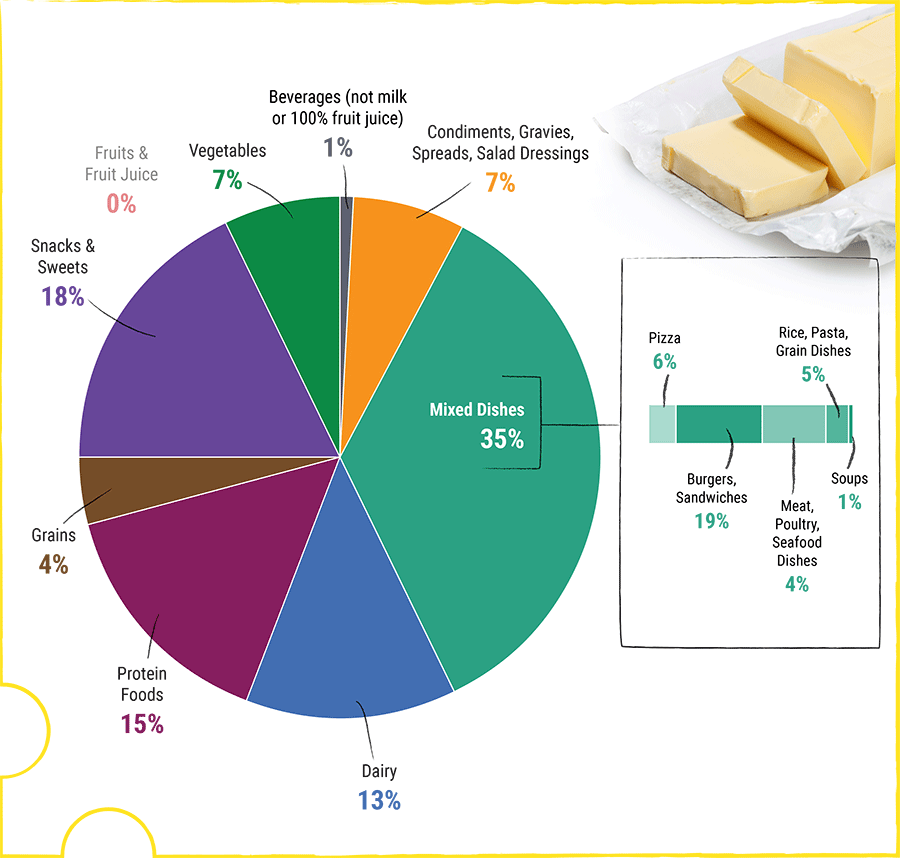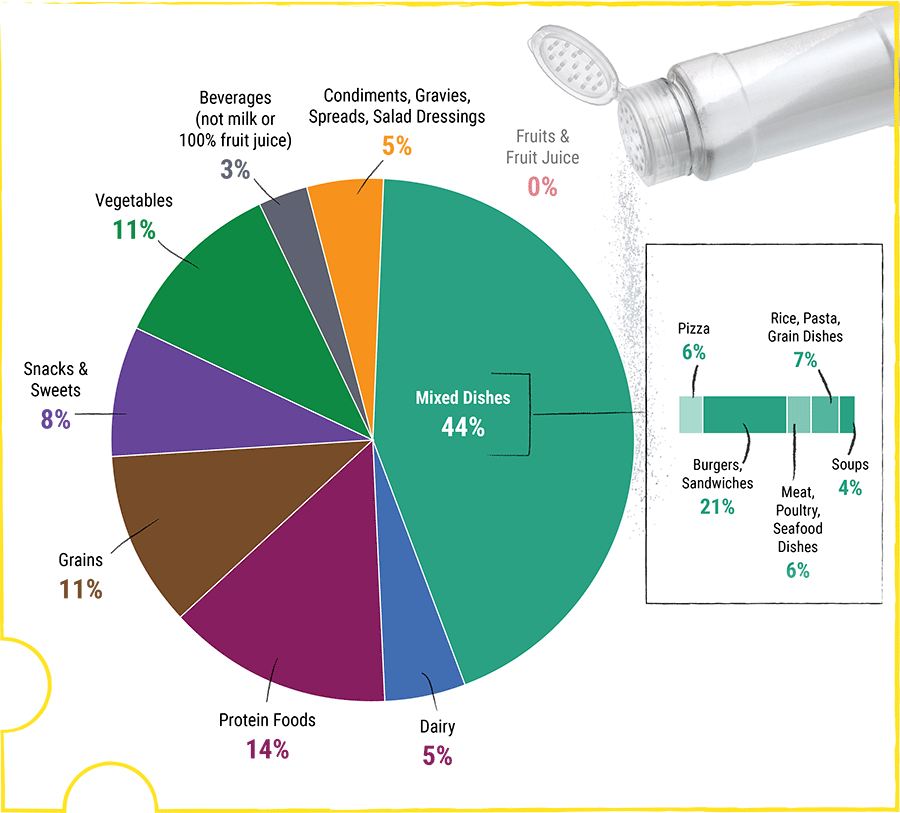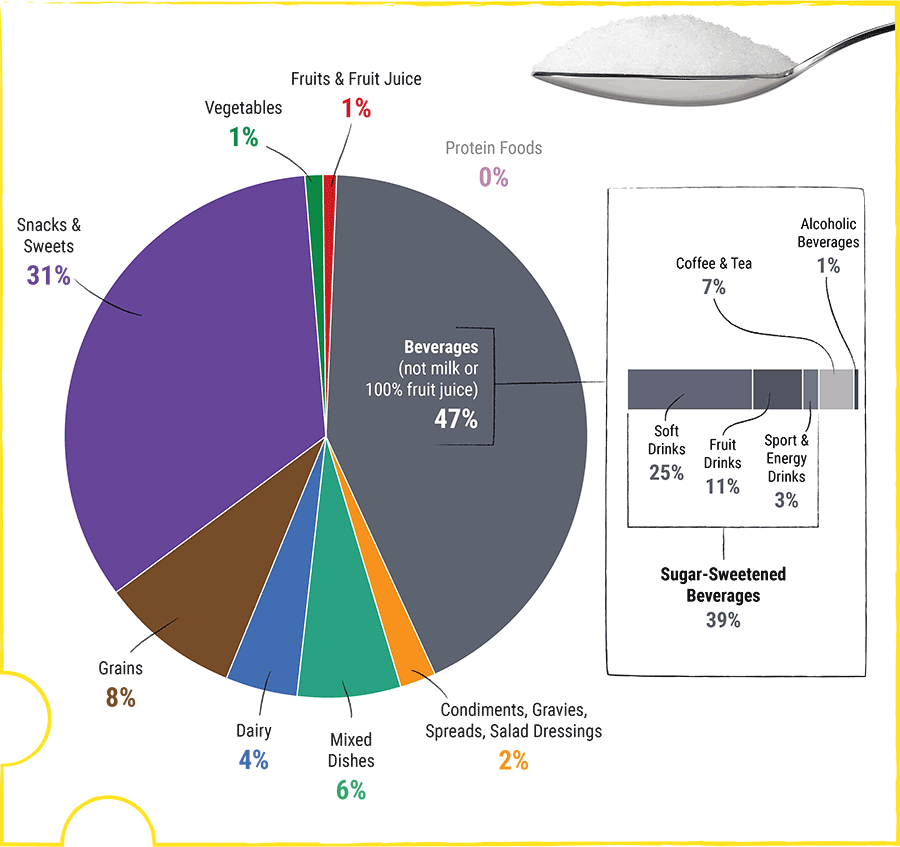The Dietary Guidelines for Americans (2015-2020): Knowing the New Recommendations for Healthy Eating Patterns
Editor's Note: Commentary based on U.S. Department of Health and Human Services and U.S. Department of Agriculture. 2015 – 2020 Dietary Guidelines for Americans. 8th Edition. December 2015. Available at http://health.gov/dietaryguidelines/2015/guidelines/. Accessed on 2/19/2016.
The 2015-2020 Dietary Guidelines for Americans (eighth edition) are issued every five years since 1980 and serve as the cornerstone of US nutrition policy and nutrition educational activities. Eating patterns and their food and nutrient characteristics are major focus areas of of the 2015-2020 dietary guidelines. These recommendations are based on a large body of evidence to support the relationship between a healthy eating pattern and constituent nutrients on chronic disease risk. A healthy dietary pattern is high in vegetables, fruit, whole grains, seafood, legumes, and nuts; moderate in low- and non-fat dairy products; lower in red and processed meat; and low in sugar-sweetened foods and beverages and refined grains.
The guidelines recommend three different USDA healthy eating patterns: the Healthy US Style eating pattern, the Healthy Mediterranean Style eating pattern and the Healthy Vegetarian Eating pattern, all of which can be adapted based on cultural and personal preferences. Interestingly, they share many common food-based features (Table 1). The Healthy US Style Eating pattern is based on the types and proportions of foods Americans typically consume, but in nutrient-dense forms and recommended amounts. Specific recommendations also have been made for saturated fat, sodium, and added sugars: < 10% of calories from saturated fat; < 2,300 mg of sodium/day; and < 10% of calories from added sugars. Compared to the Healthy U.S.-Style Pattern, approximately 75% of the population has an eating pattern that is low in vegetables, fruits, dairy, and oils, yet more than half of the population is meeting or exceeding total grain and total protein foods recommendations. In addition, the majority of Americans exceed recommendations for saturated fat, sodium and added sugars. On average, saturated fat accounts for 11 percent of total calories, with less than 30 percent of individuals consuming amounts that are consistent with the recommendation of less than 10 percent of calories. Average sodium intake is 3,440 mg per day for the US population (aged 1 year and older). In general, average daily intakes are higher for adult men (4,240 mg) than adult women (2,980 mg). Added sugars contribute on average nearly 270 calories, or more than 13 percent of calories per day in the US population. This is approximately 70% above the recommendation or proposed limit. The new dietary guidelines did not make a recommendation for dietary cholesterol for the following reason, "Adequate evidence is not available for a quantitative limit for dietary cholesterol specific to the dietary guidelines." The dietary guidelines also state the following: "Strong evidence from mostly prospective cohort studies but also randomized controlled trials has shown that eating patterns that include lower intake of dietary cholesterol are associated with reduced risk of CVD, and moderate evidence indicates that these eating patterns are associated with reduced risk of obesity." The current intake of dietary cholesterol in the US is approximately 270 mg per day. The food-based eating patterns that are recommended in the dietary guidelines contain approximately 100 to 300 mg of cholesterol.
Table 1: Three USDA Healthy Eating Patterns
Food Group |
Healthy US Style Eating Pattern |
Healthy Mediterranean-Style Eating Pattern |
Healthy Vegetarian Eating Pattern |
VEGETABLES |
2 ½ c-eq/day |
2 ½ c-eq/day |
2 ½ c-eq/day |
Dark green |
1 ½ c-eq/wk |
1 ½ c-eq/wk |
1 ½ c-eq/wk |
Red and orange |
5 ½ c-eq/wk |
5 ½ c-eq/wk |
5 ½ c-eq/wk |
Legumes (beans and peas) |
1 ½ c-eq/wk |
1 ½ c-eq/wk |
3 c-eq/wk |
Starchy |
5 c-eq/wk |
5 c-eq/wk |
5 c-eq/wk |
Other |
4 c-eq/wk |
4 c-eq/wk |
4 c-eq/wk |
FRUITS |
2 c-eq/day |
2 ½ c-eq/day |
2 c-eq/day |
GRAINS |
6 oz-eq/day |
6 oz-eq/day |
6 ½ oz-eq/day |
Whole grains |
≥ 3 oz-eq/day |
≥ 3 oz-eq/day |
≥ 3 ½ oz-eq/day |
Refined grains |
≤ 3 oz-eq/day |
≤ 3 oz-eq/day |
≤ 3 oz-eq/day |
DAIRY |
3 c-eq/day |
2 c-eq/day |
3 c-eq/day |
PROTEIN FOODS |
5 ½ oz-eq/day |
6 ½ oz-eq/day |
3 ½ oz-eq/day |
Seafood |
8 oz-eq/wk |
15 oz-eq/wk |
-- |
Meats, poultry, eggs |
26 oz-eq/wk |
26 oz-eq/wk |
3 oz-eq/wk (eggs) |
Nuts, seeds, soy products |
4 oz-eq/wk |
4 oz-eq/wk |
14 oz-eq/wk |
OILS |
27 g/day |
27 g/day |
27 g/day |
Limit on Calories for Other Uses (% of calories) |
270 kcal/day (14%) |
260 kcal/day (13%) |
290 kcal/day (15%) |
The 2015-2020 dietary guidelines' focus on eating patterns is designed to promote shifts in Americans eating patterns that will align current intakes with the food-based recommendations. Strategies are provided to help individuals shift to a more healthful dietary pattern. For example, to increase vegetable consumption and decrease saturated fat intake, the guidelines suggest increasing the amount of vegetables in mixed dishes while decreasing the other food components such as refined grains and high fat meats. Additionally, a simple shift is to include a salad or vegetable side dish at meals while also reducing portions of refined grains and high saturated fat and/or high sodium protein foods. For snacks, replacing traditional chips and dips or nachos with healthy whole grain, low fat/fat-free, low sodium chips or crackers, vegetables and salsa or another vegetable dip (such as guacamole) or a bean-based dip is recommended.
Choosing fruit in place of foods with added sugars, such as cakes, pies, cookies, doughnuts, ice cream, and candies will help to reduce added sugars and increase fruit in the diet. Additional strategies for reducing added sugar intake include choosing beverages with no added sugars, such as water, in place of sugar-sweetened beverages (i.e., soft drinks, fruit drinks, as well as energy drinks and sports drinks), which represent nearly half of all added sugar consumption. With nearly one-third of added sugar consumption coming from grain-based desserts, limiting or decreasing the portion size of grain-based desserts and instead choosing unsweetened or no-sugar-added versions of canned fruit, fruit sauces (e.g., applesauce), or yogurt are simple food-based shifts toward a healthier eating pattern.
The dietary guidelines describe additional strategies for lowering intakes of saturated fat, sodium and added sugars, the three nutrients that are targeted for reduction in the US diet. These strategies will be useful to physicians for counseling their patients about achieving recommendations for these nutrients. Related to this, it is important to know the source of these nutrients to be able to provide specific dietary advice to help patients decrease these target nutrients. The primary food sources of saturated fat, sodium and added sugars are illustrated in Figures 1-3. Mixed dishes are the major source of saturated fat and sodium in the diet and sugar-sweetened beverages are the major source of added sugars, and should be targeted when providing dietary guidance. Moreover, the nutrition facts label is an important tool for patients to use in making food purchase decisions to help reduce consumption of these nutrients, and health care providers should advocate for its use with their patients. Soon, added sugars are expected to be on the Nutrition Facts label, which will be helpful in making informed and healthy food choices.
Figure 1: Food Sources of Saturated Fat in the US Diet
Figure 2: Food Sources of Sodium in the US Diet
Figure 3: Food Sources of Added Sugars in the US Diet
Originally developed as an implementation tool for the 2010 dietary guidelines, MyPlate continues to serve as the primary nutrition education tool for consumers with newly added expanded messages to emphasize a healthy dietary pattern. To reflect the updated dietary guidelines, a new theme, MyPlate, MyWins, was designed to help consumers find solutions for common barriers to healthy eating. Specific messages are included to encourage shifts in consumption, for example, from juice to whole fruit, and replacing sour cream, cream, and cheese with low-fat yogurt, milk, and cheese. Each small change is considered one step toward a healthier diet and is a "win" for the individual. The goal of the MyPlate, MyWin campaign is to convey a positive and empowering message to the public and encourage individuals and families to make healthier choices they can enjoy.
For patients or physicians who prefer individualized guidance, SuperTracker offers personalized nutrition plans to help implement healthy food and beverage choices. It has been updated to reflect the 2015-2020 dietary guidelines. When users enter their age, gender, height, weight, and activity level, they can receive an individualized plan that includes daily calorie and food group goals. SuperTracker also allows users to track saturated fat, sodium, and added sugars. Group challenges also are a part of SuperTracker and may be used to encourage healthy behaviors through friendly competition and game scenarios. Group leaders can choose from a ready-made MyPlate Challenge or create their own custom challenge.
Numerous resources are available:
In addition, there is a Communicator's Guide that can assist health professionals in creating materials based on the dietary guidelines. The resource offers specific consumer messages and key considerations for communicating health and nutrition information to various audiences.
Keywords: Advisory Committees, Candy, Carbonated Beverages, Cheese, Cholesterol, Dietary, Chronic Disease, Energy Drinks, Fabaceae, Fruit, Health Personnel, Ice Cream, Meals, Milk, Nutrition Policy, Nutrition Surveys, Nuts, Obesity, Oils, Portion Size, Poultry, Prospective Studies, Seafood, Snacks, Sodium, Sweetening Agents, United States Department of Agriculture, Vegetables, Diet, Vegetarian, Yogurt, Primary Prevention
< Back to Listings



